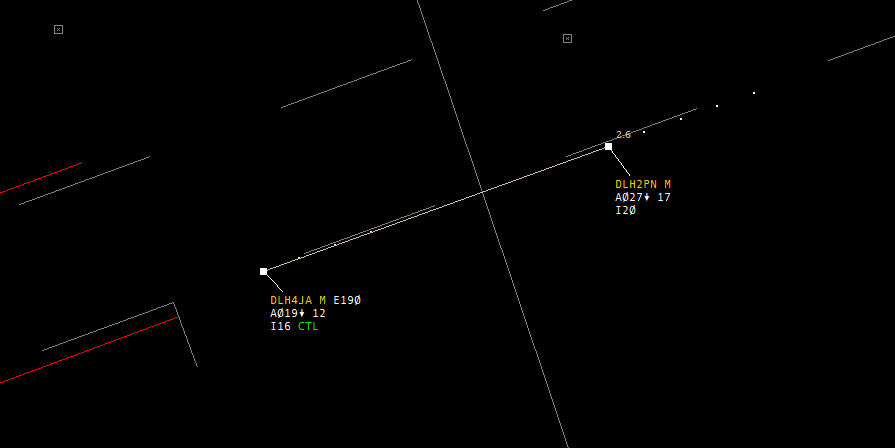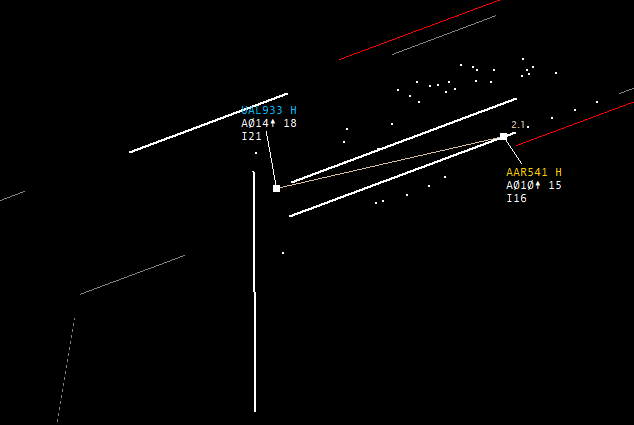Missed Approach - Controller Guide
By definition, a missed approach is the part of an approach procedure that is initiated if the approach cannot be continued for whatever reason. As this is a standard procedure and not an emergency or urgency call, every tower controller must be familiar with the handling of a missed approach.
Reasons for a missed approach
The reasons for a missed approach are complex and can be divided into two categories: Controller-initiated missed approach and pilot-initiated missed approach.
Reasons for a missed approach initiated by the controller can include
- Runway not clear: If it must be expected that a runway will not be clear when the landing traffic crosses the runway threshold, a missed approach must be instructed before the aircraft crosses the runway threshold. This also applies to situations for which the controller is not responsible (e.g. runway incursion by a pilot). Exception: Reduced runway separation is applied correctly.
 Here it is predictable that CFG2TF will not be clear of the runway in time. Therefore, BAW912N must now be instructed to execute a missed approach.
Here it is predictable that CFG2TF will not be clear of the runway in time. Therefore, BAW912N must now be instructed to execute a missed approach.
- Extended centerline not clear: At some airports (e.g. Frankfurt), certain taxiways must be clear when an inbound flies over them, otherwise the obstacle clearance is not given.
- Separation to previous approach not guaranteed: If it’s predictable that separation (wake turbulence separation or radar separation) to the preceeding traffic cannot be ensured and all other possible measures (speed reduction, delegating separation to the pilot, visual separation) have already been exhausted or are not practicable, a missed approach must be instructed. This must be done before the loss of separation occurs
 The minimum separation here is 2.5 NM. Currently the planes are still 2.6 NM apart. However, as the rear aircraft is 50 knots faster than the front aircraft, a loss of separation is predictable in the next few seconds. The missed approach must therefore be advised now.
The minimum separation here is 2.5 NM. Currently the planes are still 2.6 NM apart. However, as the rear aircraft is 50 knots faster than the front aircraft, a loss of separation is predictable in the next few seconds. The missed approach must therefore be advised now.
- Separation to SVFR not ensured: If loss of radar separation to an SVFR aircraft becomes probable, a missed approach must be instructed
Reasons for a missed approach initiated by the pilot may include:
-
Unstable approach
-
Missed touchdown zone
-
TCAS RA (Resolution Advisory)
-
Wind shear on final approach
-
Thunderstorm on final approach
-
Certain errors displayed in the cockpit (e.g. landing gear problems)
-
No landing clearance received
Handling of a missed approach
First of all: A controller must assume that a pilot can perform a missed approach at any time up to and including touchdown! Still, there must always be a plan B in the event of a missed approach.
Even in stressful situations, a missed approach should be handled calmly and professionally, according to a clear plan. The steps of this plan are now explained in detail:
1. Instruct missed approach (when initiated by the controller)
- As an instructed missed approach is usually safety-critical, the controller should raise their voice on the frequency and give a clearly audible "DLH123 go around", if necessary twice in succession.
- A reason should be given briefly and concisely (e.g. "DLH123 go around, separation not ensured" or "DLH123 go around, runway blocked").
or
1. Acknowledge missed approach (when initiated by the pilot)
- If the pilot reports a missed approach, this should be acknowledged with a "DLH123, roger". The instruction to fly the published missed approach is not necessary as it is part of the approach procedure for which the pilot has been cleared.
- The first few seconds after initiating a missed approach are very stressful in the cockpit, especially in the one-man Vatsim cockpit, so no further radio messages should be sent to the pilot. Instructions relevant to separation (see point 2) are the exception.
2. If necessary, establish separation + give traffic information
-
In most cases, a pilot can fly the standard missed approach procedure and has no "opponent". However, if the missed approach brings them close to another aircraft - regardless of whether the separation is given at all times or not - traffic information shall be given.
- If separation from other traffic is not ensured, measures must be taken to establish separation.
-
-
Radar vectors ("turn away"): Upon reaching MVA, the missed approach (or, depending on the situation, other relevant traffic) may receive radar vectors, e.g. runway track, present heading or a vector to turn away. The missed approach should logically be turned away from the track of the conflicting traffic.
-
Limit altitude: Sometimes it is sufficient to keep the missed approach or a departure at a certain altitude (at least MVA) to ensure separation.
-
- In time-critical situations and only at international airports (EDDx), the tower controller may implement these measures without prior consultation with the radar controller (separation of IFR flights is delegated to the tower there). At all other airports, separation measures must be coordinated with the APP controller, if online.
-
Of course, all other traffic (other departures, VFR, traffic at the APP, etc.) must be taken into account.

AAR541 is going around. UAL933 has just taken off and is about to turn slightly right to the northwest. To avoid entering the wakes, AAR541 should be turned to the left above the MVA (above 2100 feet) (e.g. heading 220). In addition, traffic information should be given: "AAR541, traffic, Boeing 777 just airborne runway 25C, when passing 2100 feet turn left heading 220 for separation".
- In good weather (ceiling above the MVA), a pilot can also be turned below the MVA during the day, but only for immediate danger prevention. In this case, however, "Maintain visual reference to terrain until passing [MVA]" must be added. This procedure should only be used in exceptional cases
A turn below the MVA without the above mentioned addition is a serious, safety-relevant issue and will lead to a fail in exams.
3. Coordination with Approach / other stations
-
Every missed approach must be coordinated with the approach controller (if online). Verbal coordination should always be preferred, as labeling the tag alone is often lost.
Example: "Pickup North, Tower - Go ahead - Missed approach Asiana 541, Runway 25L, flying [standard missed approach / Heading 220 due to United taking off etc.]. I don't know the reason yet. - Roger, send him to 125.355"
4. Ask the pilot for the reason and send him off
-
If the reason for the missed approach was not obvious (e.g. not instructed by the controller), the controller should ask for it. ("DLH123, report reason for missed approach"). The reason may be relevant for other air traffic (e.g. windshears - this information should definitely be passed on to following pilots) or may be of a technical nature (e.g. problems with the engine, landing gear, etc.), as a result of which the aircraft should be given priority for the next approach or be treated as an emergency if applicable.
-
As soon as the aircraft is clear of all other traffic and some time has passed since the initiation of the missed approach, the aircraft is sent away to the approach controller.
5. Pass on the reason to the APP
-
As mentioned above, there can be many reasons for a missed approach which are also important for the approach controller to know. Therefore, the reason should be forwarded to the APP controller so that he does not have to ask the pilot about it again.
